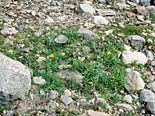
1 -
Glacier forefield receiving additional nutrients
1 -
Glacier forefield receiving additional nutrients
An almost barren glacier forefield received slow release
fertiliser.
Look at the result!
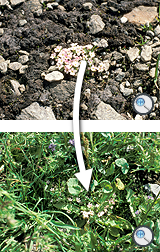
2 -
Glacier forefield community before and after fertiliser addition
Nutrient addition causes species to become winners and losers. Slow growing
cushion plants (Fig. 3) and small rosette species become overgrown by
vigorously responding grasses and herbs (Fig. 4) when nutrients are added to a
sparse glacier forefield community.
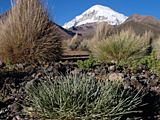
5 -
Festuca orthophylla
tussocks grow faster
when receiving llama dung (a young, vigorous
tussock in the front).
5 -
Festuca orthophylla
tussocks grow faster
when receiving llama dung (a young, vigorous
tussock in the front).
Dry llama dung collected from overnight kraals
and spread around tussock grasses enhances
growth, but also stimulates nitrophyllous herbs
such as Urtica sp.
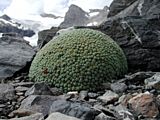
6 -
Androsace
cushion, a closed compost heap with rich microbial life in an otherwise
barren landscape (2500 m, Wildstrubel glacier, Swiss Alps).
6 -
Androsace
cushion, a closed compost heap with rich microbial life in an otherwise
barren landscape (2500 m, Wildstrubel glacier, Swiss Alps).
On very nutrient (humus) poor substrates, plants are successful if they retain
the nutrient capital they acquire year by year. The cushion form prevents the
loss of dead biomass (leaf litter) through wind and water. A "private" compost
heap creates a microcosm for a rich decomposer community in an otherwise barren
environment.
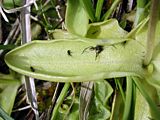
7 -
The sticky
Pinguicula
leaves trap insects which are digested by enzymes excreted by leaf glands.
7 -
The sticky
Pinguicula
leaves trap insects which are digested by enzymes excreted by leaf glands.
On very poor soil, some species even trap insects and digest them to improve
their diet. Insectivorous
Pinguicula
species are found both in the Alpine and the Arctic.





